
Besides the traditional markets that attract a large number of tourists every night, Thai floating markets are bustling with boats every morning. Visitors can feel the vibrant atmosphere on boats or on the shore. Floating markets preserve the typical cultural features of the Thai people, where they live in harmony with nature and rivers. Before visiting, let's take a look at some interesting facts with Asia King Travel.
Many floating markets are close to big cities of Thailand. They’re perfect for a day trip if you’re short on time but still want a memorable adventure. At these markets, you will see handmade jewelry, intricate crafts, and exotic spices that might not be available.
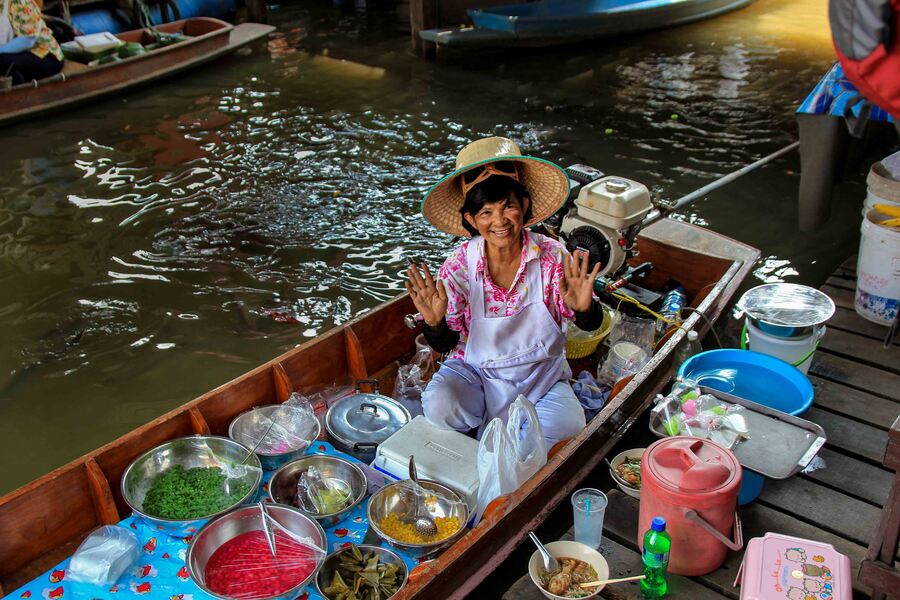
Explore floating markets is explore a Thai lifestyle on the water. Photo: PlacesofJuma
Exploring the floating markets often involves taking a boat ride, which adds a leisurely touch to your visit. And they are not just about shopping, they are also a visual treat. Boats, water and people all combine to create your perfect travel photos. The charm is undeniable.
Suggested for you: The BEST Bangkok Exploring floating markets 2024
Floating Markets have a long history, since the Ayutthaya Period (14th - 18th century). During this time, canals were more essential for transportation than roads. Most Thai people lived near rivers and canals, as water was crucial for farming and daily life. Villages naturally grew along these waterways, and floating markets emerged as central hubs to exchange goods.
The floating markets flourished in the Chakri dynasty (1782–present), especially in Bangkok and its surrounding provinces. King Rama IV and King Rama V encouraged the construction of more canals, which expanded trade routes and facilitated market growth. But by the mid-20th century, when more modern forms of transportation were developed, many floating markets gradually declined or moved to the land.
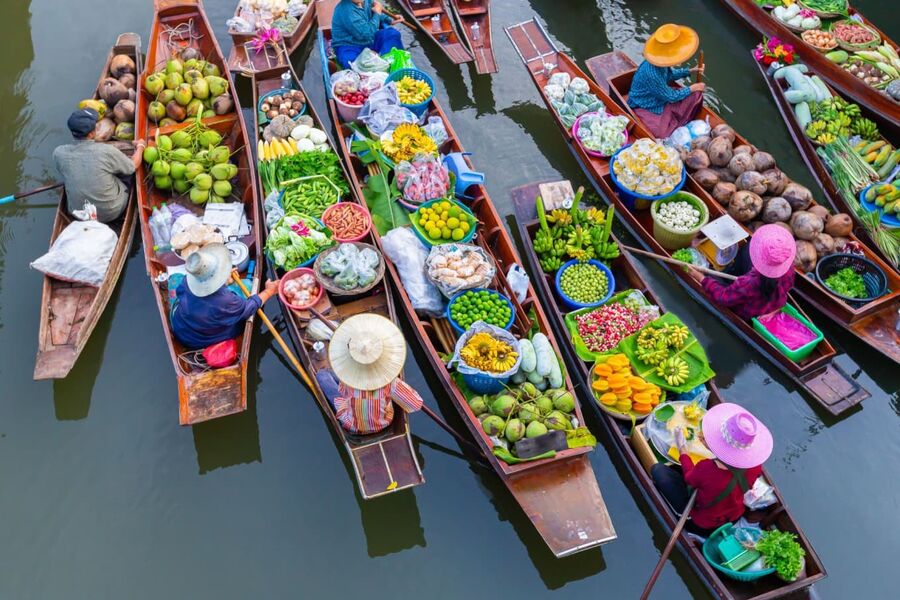
Floating markets were the primary way for people to exchange goods in the past. Photo: Cuddly Nest
Floating markets are now being restored and preserved as tourist attractions. While some aspects have become commercialized, many markets retain their historical charm. These places still reflect a part of the traditional Thai way of life but have also adapted to meet the preferences of foreign tourists.
Not all floating markets are the same. Each one has a unique thing that stands out from the others. For example:
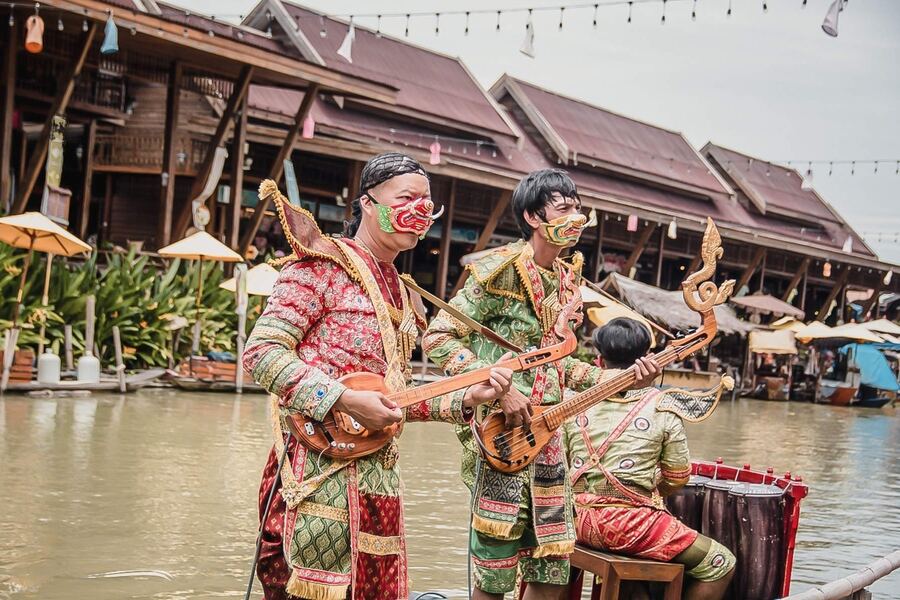
Music performance at Pattaya Floating Market. Photo: Klook
In the morning, monks row their boats through the canals, receiving food offerings from families living along the riverbanks or from vendors at the floating market. These offerings typically include rice, fruits, or home-cooked meals - common items found at floating markets. This act not only holds spiritual significance but is also deeply intertwined with the communal lifestyle centered around canals.
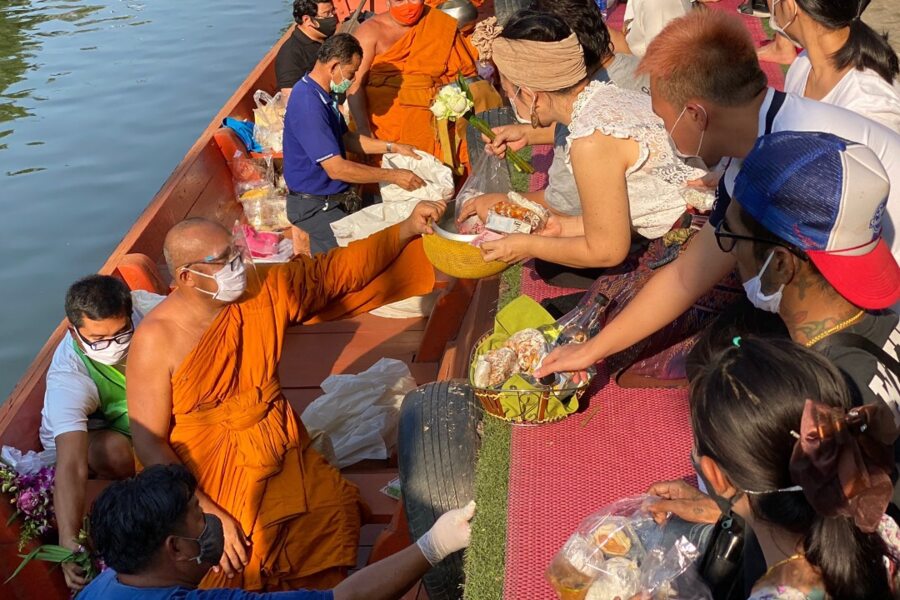
Monks receive offerings from local people. Photo: Richard Barrow
For local people, making offerings to monks is a way to accumulate merit and pray for good business. Many people feel a sense of peace and tranquility when witnessing monks performing alms rounds on boats. This can be most commonly seen at the Damnoen Saduak or Amphawa floating markets.
These markets are more than just a means of making a living, they are a legacy. Grandparents, parents, and now their children have grown up on the canals, learning the art of trade from a young age. It’s common to meet vendors who proudly share stories of how their families have been trading at the same spot for generations.
Generational traders often form strong bonds with local buyers and fellow vendors. Regular customers might have been buying from the same family for decades. And tourists, they are engaging with a rich narrative of family and community. Vendors are often happy to share stories about their ancestors, their craft, or how the market has changed.
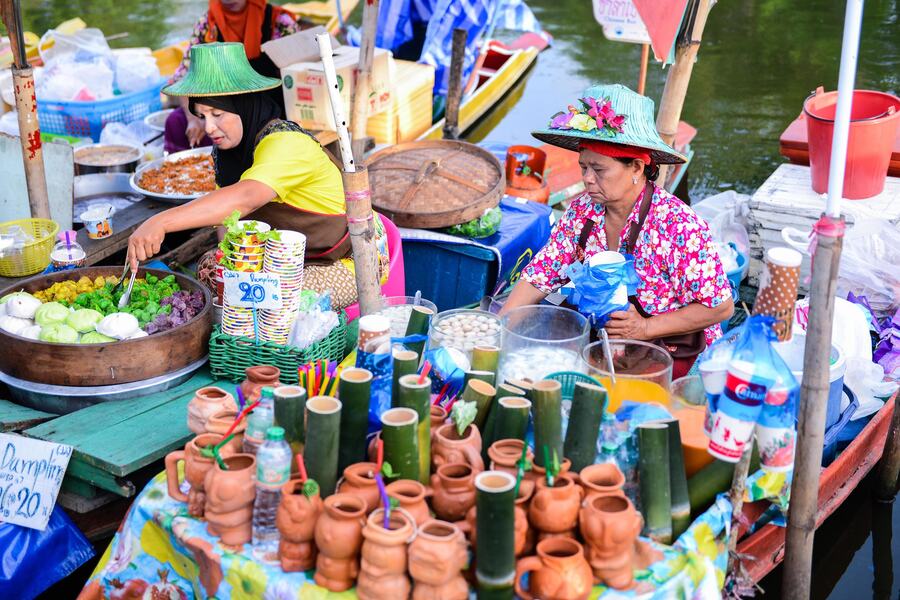
Sadly, this inheritance is likely to decline in the future. Photo: Vecteezy
The vendors nowadays are also adaptive. When floating markets have evolved to attract tourists, generational traders have adjusted their offerings to meet new demands. This might mean learning basic English to communicate with international visitors. Despite the changes, the core values of their heritage remain intact.
Boat noodles, or Kuay Tiew Rua, originate from the dish being cooked and sold on boats. To accommodate the limited space, the noodle portions are typically served in small bowls, just enough for customers to eat easily without spilling. As the bowls are quite small, people often order 3-4 bowls at a time. The noodle boats will come when customers order for convenience.
Boat noodles consist of rice vermicelli, served with toppings like pork, meatballs, shrimp, or fish, and a distinctive reddish-brown broth made with pig's blood. The broth can be either sweet and rich (made from soy sauce and bone broth) or sour and spicy like tom yum. Because the noodles are quite spicy, customers who cannot handle them should specify this to the vendor.
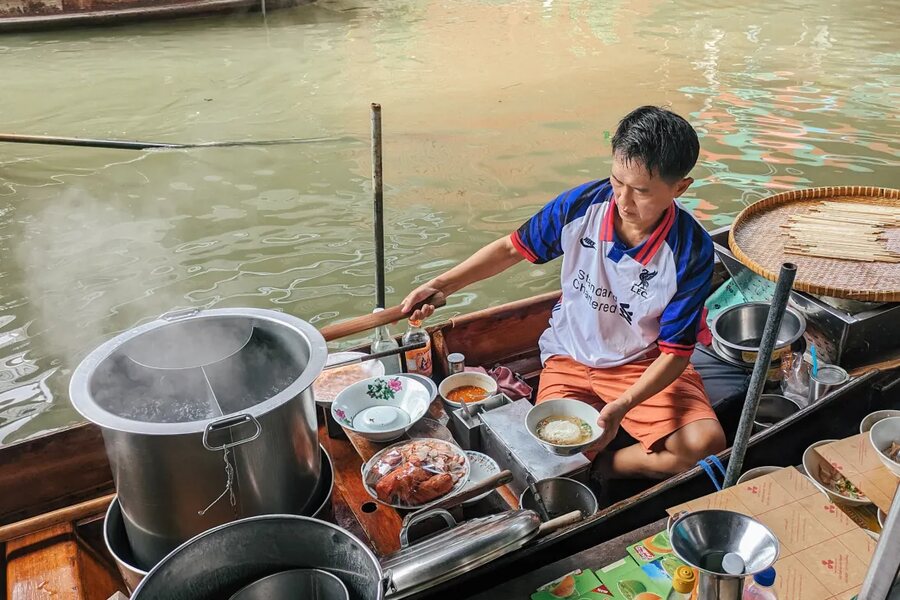
Boat noodles are distinctive for their small portion sizes. Photo: Atlas Rambler Travel Guides
Many tourists say boat noodles are "delicious" and cannot be missed when visiting a floating market. Nowadays, there are more restaurants on land serving boat noodles than at floating markets, but people still refer to it by the familiar name. In Bangkok, you can find many restaurants around Victory Monument.
The truth is that these markets aren't as “floating” as the name suggests. Over the years, changes in infrastructure, local development, and tourism have transformed their landscapes, shifting the balance between water and land. Vendors now set up booths along the banks of the canals, where they can serve tourists more easily.
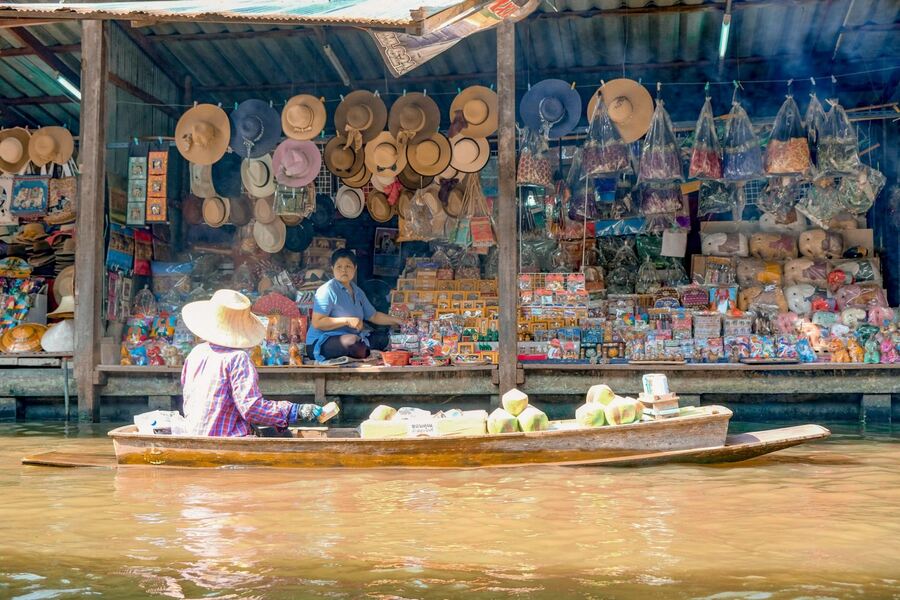
The floating market is held both on the river and on the land. Photo: Explore Shaw
Many vendors now prefer to stay on the land to avoid the difficulties of operating on water, where space can be limited, and movement is slow. Tourists visiting these markets often enjoy wandering along the stalls on the shore, while the boats are seen more as a novelty than an essential part of the market experience. The boats may still serve to sell food or carry tourists on scenic rides, but the core of the commerce is now centered on land.
The boat-based trade is still alive and well, but it’s no longer as important to the market experience as it once was. The shift toward land-based commerce is a natural evolution, but it also means that the “floating” part of the floating markets is becoming less central.
While Thai floating markets have evolved over time, their allure as a tourist destination remains undeniable. There's still so much to discover. Contact Asia King Travel today to embark on your journey to the Land of Smiles.
Suggested for you: Top 5 Night Markets in Bangkok for a great shopping haul